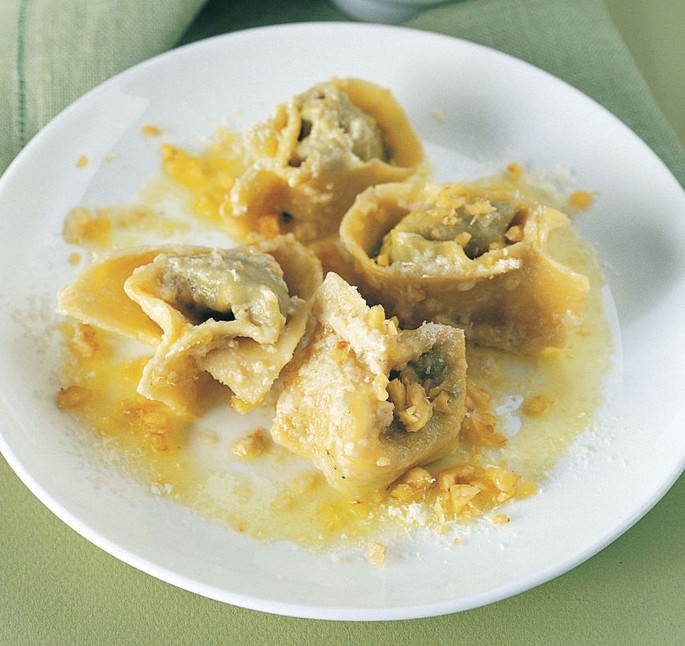
By Greta Magistrelli
As much as I say, and I love to say, I was born and raised in Milan, Italy, I have to admit that, at the same time, my culinary heritage is predominantly characterised by the influence of my Grandma’s cooking from Rapallo, a little town on the Ligurian coast, between Genoa and the Cinque Terre.
I never fully understood how “Ligurian” I am, until I was lucky enough to be able to work and live in Genoa for a few years. While I was there, I understood that I eat more like a Ligurian rather than a Milanese.
I grew up making fresh pasta with my beloved grandma. I grew up having to stand on the chair, as I wasn’t tall enough to help her at the table. I grew up tasting raw fillings with her to adjust salt and herbs. I grew up loving the moment at the very end of making pasta with her, when she counted the ravioli one by one, with such an admirable satisfaction. I grew up devouring multiple plates of gnocchi al pesto or ravioli al tocco or tagliatelle al ragù. Yet, by far, my favourite ravioli, stuffed fresh pasta, is pansoti di Borragine. “Pansoti” comes from “pansa” which means “belly”, because these ravioli really do fill up your belly!
Stuffed fresh pasta recipes were found in ancient cookbooks throughout Italy and history teaches us that similar dishes existed in the Babylonian, Egyptian, Greek and Roman cuisines. Even in China we find steamed ravioli. But what is certain is that in Genoa, as well as in the whole hinterland of Liguria, the art of stuffed pasta has developed widely compared to the rest of Europe. It became then, with the centuries, a sophisticated art based on the balance of multiple ingredients – vegetables, meat, cheese, spices and aromatic herbs. There are also documents attesting the production of ravioli in Liguria that date back to the end of 1100.
In Genoa ravioli, u ravieu in dialect, as we know them nowadays, are a main traditional dish.
The filling of Pansoti di Borraggine is made with herbs, in particular with borage. Borragine (Borage) is an annual herb in the flowering plant family Boraginaceae. It is native to the Mediterranean region, and has naturalized in many other locales. In fact, I am very lucky to have been able to find it here in Perth as it is really the main ingredient of the Pansoti. The sauce that goes with Pansoti di Borragine is a creamy but crunchy walnut sauce. In fact, the chopped walnuts give consistency and a bitter taste and the prescinseua, a typical Ligurian fresh cheese, or a bit of fresh milk, makes the sauce velvety. The walnuts must be carefully chopped, preferably crushed in a mortar as tradition dictates and also peeled (this step may take up a few hours!). In addition to walnuts and cheese, the sauce also includes pine nuts, another ingredient of the Ligurian tradition, olive oil and fresh marjoram.
Sometimes, making fresh pasta and sauces make me miss home even more, as I’m never able to cook as good as my grandma does (also the ingredients are different and this impacts the final flavours a lot) and I miss making it with her. Nevertheless, it makes my grandma so proud to know that I can reproduce these recipes here for family and friends. The flavours take me back home, and I truly cherish the moment of cooking and finally eating what I make with my own hands. I could not survive here without my basil, flour, fresh eggs, borage and more. I patiently wait for the day of being reunited with her and making 300 plus ravioli for just 6 people. Yes, we do that many!

